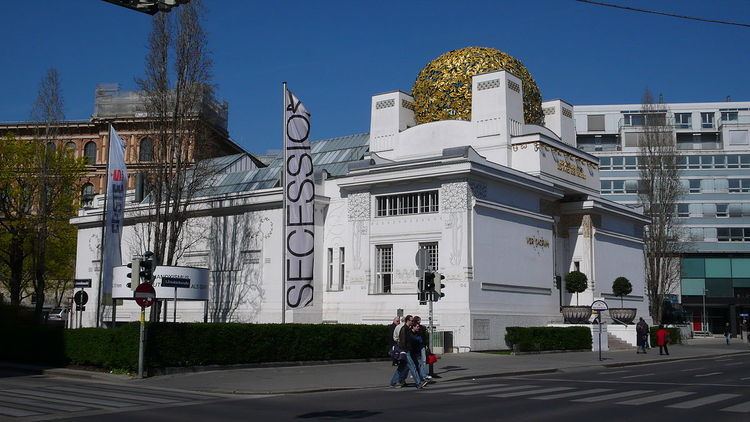Type Exhibition pavilion Construction started 1897 Floor area 1,000 m (11,000 sq ft) Architectural style Art Nouveau | Location Vienna, Austria Completed 1898 Opened 1898 Architect Joseph Maria Olbrich | |
 | ||
Diameter 40 m × 30 m (131 ft × 98 ft) Address Friedrichstraße 12, 1010 Wien, Austria Hours Open today · 10AM–6PMSunday10AM–6PMMondayClosedTuesday10AM–6PMWednesday10AM–6PMThursday10AM–6PMFriday10AM–6PMSaturday10AM–6PMSuggest an edit Similar Leopold Museum, Belvedere - Vienna, Österreichische Galerie Belvedere, Kunsthistorisches Museum, Albertina Profiles | ||
Klimt s beethoven frieze at secession building vienna
The Secession Building (German: Wiener Secessionsgebäude) is an exhibition hall built in 1897 by Joseph Maria Olbrich as an architectural manifesto for the Vienna Secession, located in Vienna, Austria. Secession refers to the seceding of a group of rebel artists from the long-established fine art institution.
Contents
Description
The building features the Beethoven Frieze by Gustav Klimt, one of the most widely recognized artworks of Secession style (a branch of Art Nouveau, also known as Jugendstil). The building was financed by Karl Wittgenstein, the father of Ludwig Wittgenstein.
The motto of the Secessionist movement is written above the entrance of the pavilion: "To every age its art, to every art its freedom" (German: Der Zeit ihre Kunst. Der Kunst ihre Freiheit). Below this is a sculpture of three gorgons representing painting, sculpture, and architecture.
Trivia
The building has been selected to figure on the national side of the €0.50 Austrian coin.
It also appears as the main motif of one of the Austrian gold collectors' coins: the 100 euro Secession commemorative coin, minted in November 2004, on the obverse side. The reverse depicts a detail from the Beethoven Frieze, which is housed in the building.
